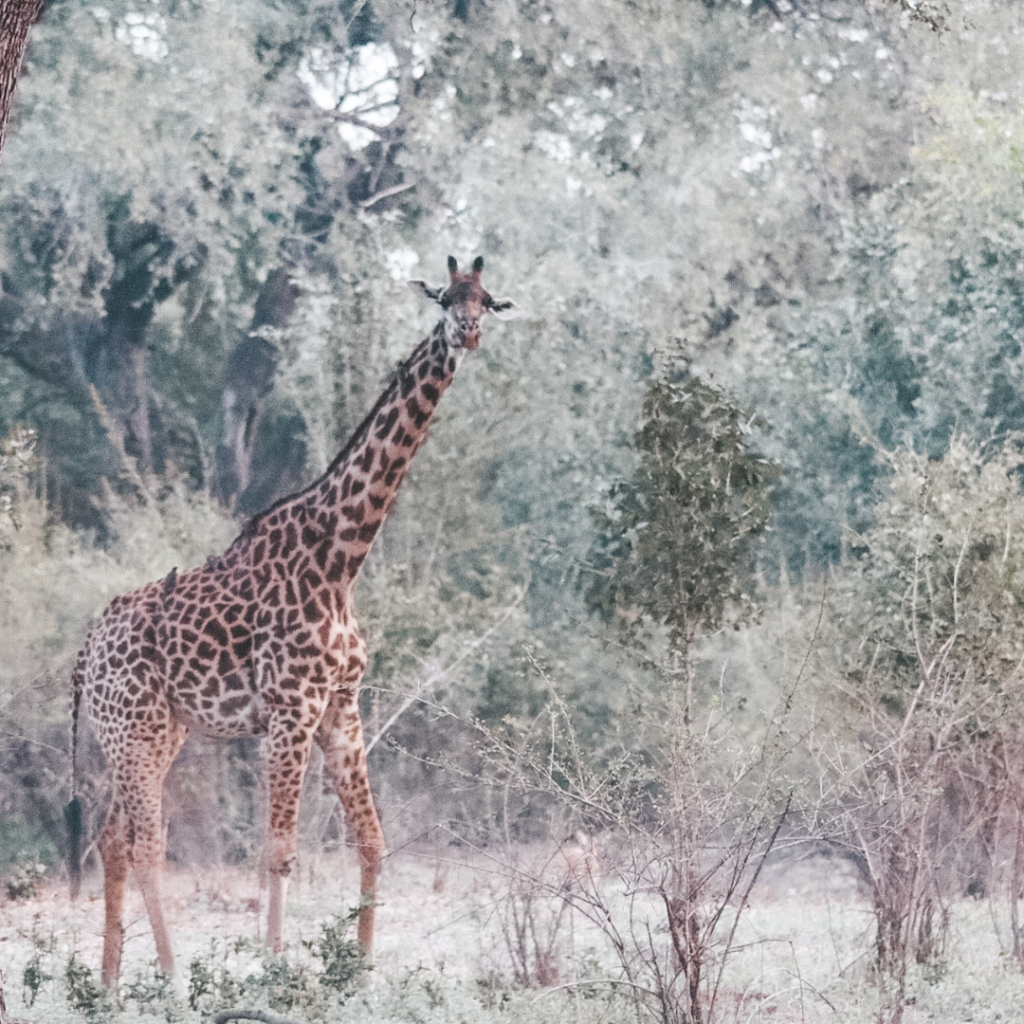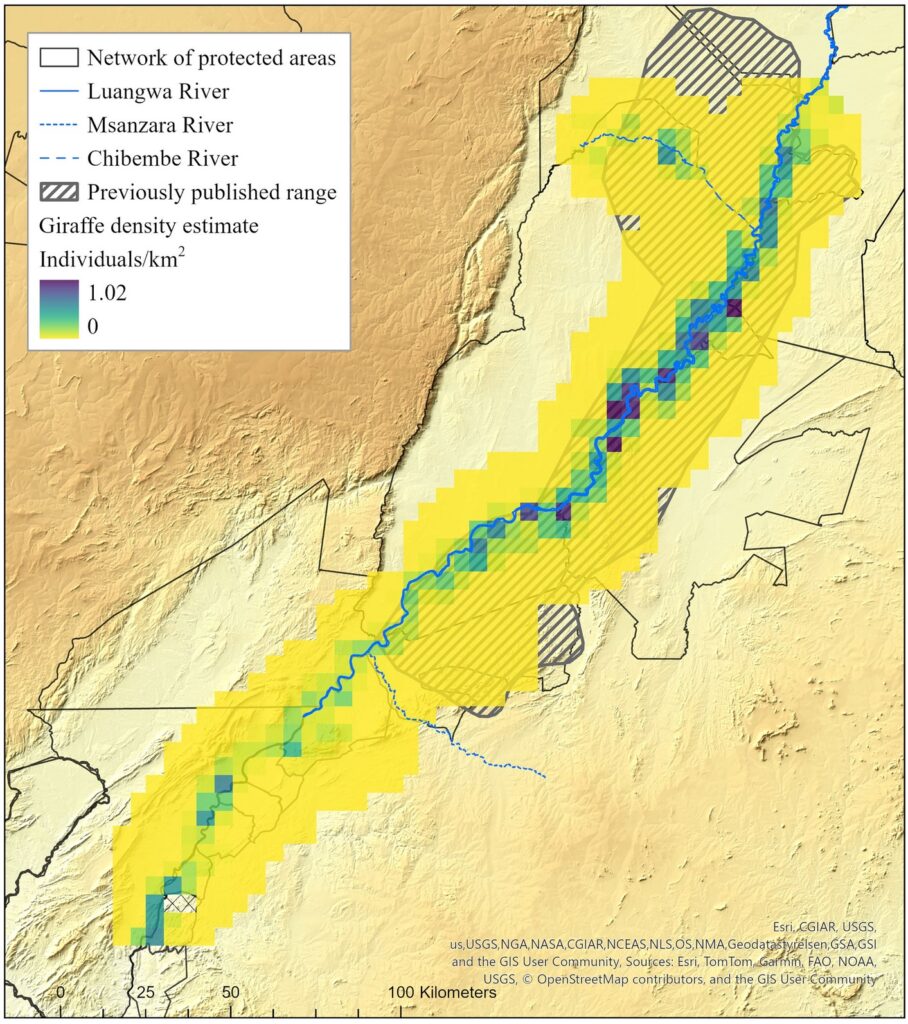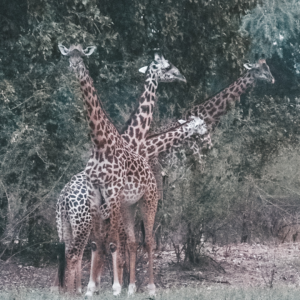Zambia’s Luangwa Valley is home to a natural treasure found nowhere else on Earth: The Luangwa giraffe (Giraffa tippelskirchi thornicrofti), a genetically unique and geographically isolated subspecies of Masai giraffe. In a groundbreaking study led by the Giraffe Conservation Foundation in partnership with the Zambian Carnivore Programme, the Department of National Parks and Wildlife (DNPW), BioCarbon Partners (BCP), and others, researchers have produced the first scientifically robust estimate of this population’s size, structure, and range.

The findings are both hopeful and urgent, providing essential data to protect a vulnerable subspecies in a rapidly changing landscape.
Across Africa, giraffe populations have declined by nearly 30% in just the last three decades, falling from approximately 155,000 individuals in the 1980s to around 117,000 today. This “silent extinction,” as it’s often called, has largely flown under the radar compared to other megafauna.
Key threats include:
Habitat loss and fragmentation;
Poaching;
Human-wildlife conflict;
Civil unrest in key range states.
While some populations are stable or increasing under protection, genetically unique and isolated subspecies like the Luangwa giraffe face heightened risks due to their small numbers and limited geographic range.
This new study offers a timely and vital snapshot of the Luangwa giraffe, estimating between 651 and 890 individuals across the Luangwa Valley—far more than previous anecdotal estimates had suggested. The study documented the giraffes extending 120 km south of their previously known range, showing they inhabit a much broader landscape than earlier maps captured.
Using photographic search-encounter surveys and spatial capture-recapture modeling, researchers were able to generate accurate density and distribution data across national parks, game management areas (GMAs), and private reserves.

Key findings from the study reveal that giraffe density is highest near permanent rivers, where riparian vegetation provides essential forage. Interestingly, moderate levels of human activity did not significantly impact giraffe density, indicating that Luangwa giraffes may be able to coexist with people in shared-use landscapes. However, densities declined sharply in heavily impacted areas, highlighting the urgent need for smart land-use planning, effective conservation strategies, and the establishment of buffer zones to protect core habitats.
The success of this research lies in its deeply collaborative and participatory approach.
Led by the Giraffe Conservation Foundation, the study involved: Zambian Carnivore Programme, Zambian Department of National Parks and Wildlife (DNPW), BioCarbon Partners (BCP), Safari operators, local communities, and private reserve owners.
This cross-sector cooperation enabled access across complex, overlapping land uses—from strictly protected areas to community-managed conservancies. It also empowered local stakeholders through training, capacity-building, and inclusion in fieldwork and monitoring.
The Result?
Not just new data, but a stronger foundation for long-term giraffe conservation in Zambia.
These areas continue to deliver multiple environmental and social benefits, including carbon sequestration, climate resilience, community development, and biodiversity protection. With the addition of this new research, the biodiversity co-benefits of REDD+ have become even more evident. By offering the infrastructure, strategic partnerships, and financial mechanisms needed, REDD+ initiatives are enabling landscape-scale monitoring and conservation efforts that are vital for protecting species like the Luangwa giraffe, particularly in regions that fall outside formally protected areas.

This study places Zambia at the forefront of integrated landscape management, demonstrating how carbon finance and biodiversity conservation can work hand in hand to achieve broader environmental goals. It underscores that REDD+ is not just about preserving trees, but about protecting entire ecosystems. The findings also show that conservation efforts can thrive beyond the boundaries of national parks, especially when supported by collaborative science, inclusive local participation, and robust monitoring frameworks. For Zambia, this reinforces its emerging role as a leader in nature-based solutions and evidence-based conservation on the African continent.
The Luangwa giraffe is a national treasure, and now, we have a scientifically grounded baseline to monitor and protect it. As pressures from land use, climate change, and human development grow, this research offers a clear path forward: collaboration, innovation, and integration.
At BCP, we’re proud to support science-driven conservation that connects carbon, community, and biodiversity. Because protecting species like the Luangwa giraffe means protecting the ecosystems that support all life, ours included.
Learn More: 🔗 Giraffe Conservation Foundation 🔗 Zambian Carnivore Programme 🔗 BCP Conservation Impacts 🔗 World Bank ISFL Program
